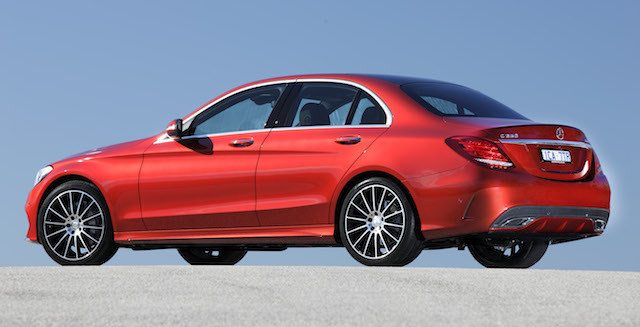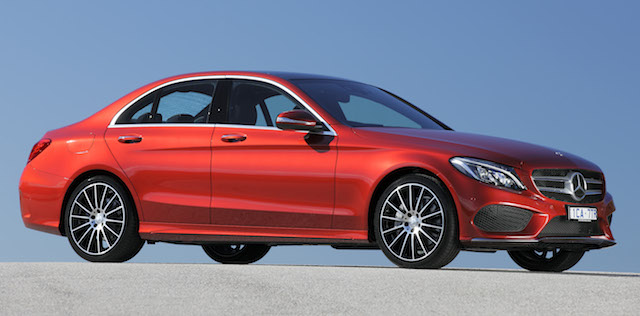
There is much riding on the new C-Class range for Mercedes-Benz in New Zealand, mostly that it is key to the carmaker leapfrogging BMW and Audi to become the luxury passenger car leader.
It won’t happen this year – the 40 to 50 C-Class models Mercedes-Benz NZ general manager Ben Giffin expects to sell each month until Christmas won’t be enough to play catch-up with BMW and Audi, neck-and-neck in the 2014 sales race.
But he reckons next year will be a different story. The mid-sized C-Class is the German carmaker’s biggest-selling model worldwide and guaranteed supply from the factory over the next 12 months or so, he says, will help Mercedes-Benz head off its German rivals for the first time in NZ. It’s a big call.

BMW and Audi have been front-runners for years in the passenger car market. At the end of July this year, BMW had sold 1270 cars against Audi’s 1257 and Mercedes-Benz’s 1096. Advantage BMW and Audi, both averaging sales of about 180 cars a month to Mercedes-Benz’s 156. Put another way, BMW and Audi are selling roughly six more cars a week than Mercedes-Benz.
But Giffin believes the C-Class (codename W205) and the expanded range of Mercedes-Benz compact cars, including the CLA sedan and GLA sports utility, along with the upcoming bigger SUV, the GLC (the replacement for what has been the left-hook-only GLK), will help take the carmaker to the top of the premium class.
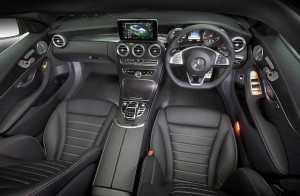
Sales growth year-on-year, he says, is pointing to leadership. “The most important thing for us is that we are going at 34 per cent, Audi at 11 (per cent) and BMW at 6 (per cent). So we are going at five times the rate of BMW … so eventually it’s a time matter (to become No.1),” he said.
“It’s been the SUV segment where we have been lacking. If you have a look at the statistics year to date the luxury SUV market in New Zealand is up 58 per cent. And we are still lacking a very import model there. The (front-drive) GLA was only launched this year and the (all-wheel-drive) 250 4Matic GLA model only arrived eight weeks ago. It will be our biggest seller in that segment. The GLC next year will make a significant difference.”
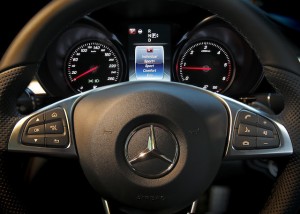
Just how important C-Class is to Mercedes-Benz shows up in sales this year of the outgoing model, which Giffin says have accounted for about 30 per cent of overall numbers. “Our success with C-Class is all about our customer focus,” he says.
The new range of sedans and estates goes on sale in NZ this weekend. Take it as read that standard kit is of the Uncle Tom Cobbley and all variety. The C-Class is the first Mercedes-Benz built on the ‘MRA’ platform, an almost 50:50 mix of steel and aluminium for lighter weight and improved dynamics and fuel use. MRA stands for ‘Modular Rear-drive Architecture’, a chassis that will be used on other rear-drive models.
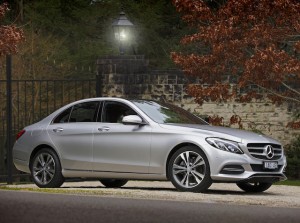
I sampled three of the new sedans at the launch in the Yarra Valley, outside of Melbourne this week: the petrol-powered C 200 (NZ$71,900) and C 250 (NZ$86,900), and the diesel C 250 BlueTec (NZ$88,400), all using direct-injection engines equipped with fuel-saving start/stop and mated to seven-speed transmissions.
The C 200 and C 250 use a ‘family’ Euro6 2.0-litre engine that sits under the bonnet of a number of four-cylinder compact models in different states of tune. It develops 135kW/300Nm in the C 200 and 155kW/350Nm in the C 250. Mercedes-Benz claims fuel use in both cars of 6 litres/100km (47mpg), or C02 output of 138gr/km.
The C 250 BlueTec gets a 2.1-litre diesel delivering 150kW/500Nm, claimed fuel economy of 4.5 litres/100km (63mpg), or C02 output of 116gr/km. BlueTec is the name of a system that burns off harmful diesel soot in the exhaust.

In a nutshell, the new C-Class is longer, wider, lower and almost 100kg lighter than the outgoing car. The wheelbase is longer, too, by 80mm. The car shines as an executive package. Mercedes-Benz has a new suspension set-up, reworking its long-time five-link rear assembly and using a new four-link front for improved cornering stability and to accommodate either steel or Airmatic air springs. The front suspension towers are just another of the many aluminium components in the car.
There will be debate over steel versus air springs. I believe steel offered an all-round more compliant ride on a mix of roads on the test route. Air springs make a smooth road even smoother but they didn’t like broken surfaces on a rural Aussie road at 80-100km/h, nor lower speeds over sharp surfaces in towns. In each case air didn’t absorb the bumps and bangs as well as steel.

Of the five drive programmes – Comfort, ECO, Sport, Sport+, Individual – Sport appeared the best day-to-day compromise, firming up the ride, quickening the gearshift patterns and throttle response, and nicely weighting up the electric steering. Comfort is the default setting; ECO optimises fuel use; Sport+ is what it says it is; Individual tailors the car to the driver.
The best feature of the C-Class is the design and quality of the interior. Fit and finish is outstanding, better than anything Mercedes-Benz has done in a volume vehicle. The cabin is a crackerjack place to be, the analogue clock and silver air vents capturing the eye, and the layout offering more leg and shoulder room front and aft. Instruments, switches and dials are instantly familar … except for a new-fangled finger-touch thingy that hovers over the COMAND system rotary dial on the centre console like a bullfrog over a petri dish.
Mercedes-Benz says it’s a further evolutionary step that allows driver or front passenger to ‘feel’ their way via haptic responses to functions on the seven-inch screen display. It’s a safety thing apparently. A German university study says a “driver’s gaze is diverted away from traffic 23 per cent less when haptic feedback is activated.”
I didn’t bother with it. Nor did many of the other testers. A bridge too far. Too much to take in a few hours. Perhaps another day when Mercedes-Benz NZ offers a test car or two.
